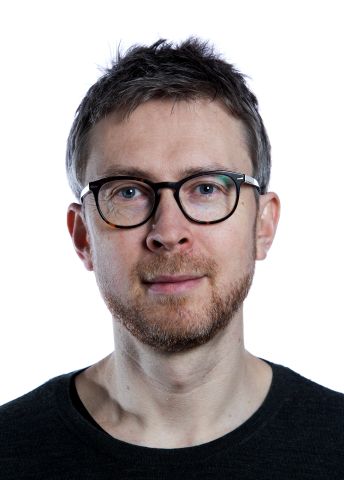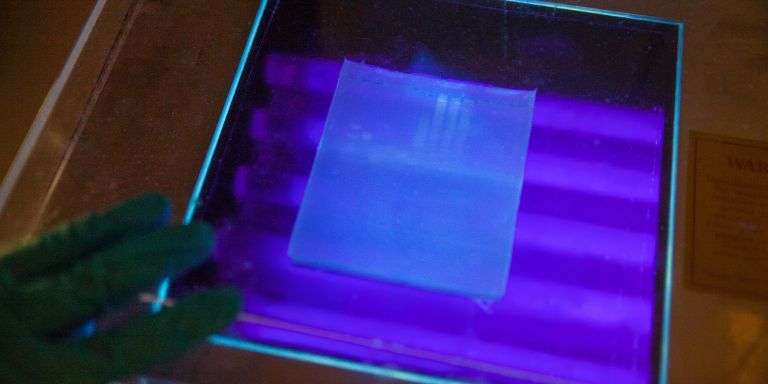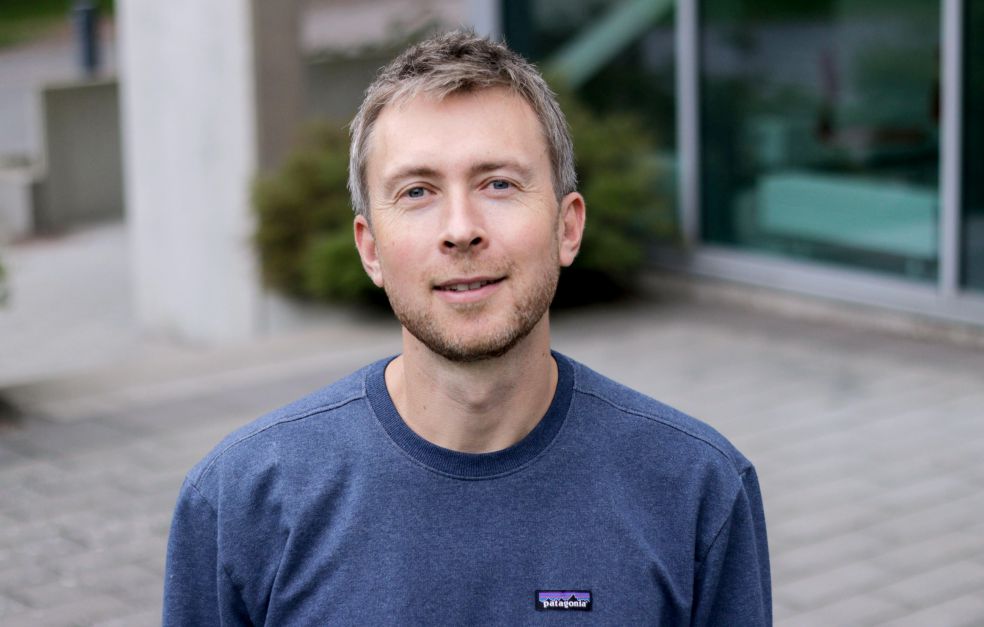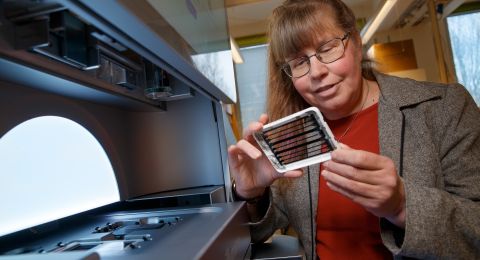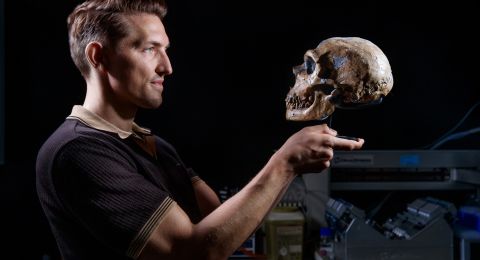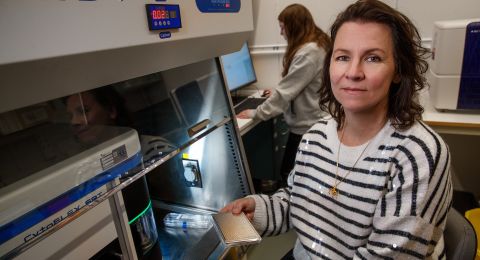Erik Larsson Lekholm is studying huge quantities of DNA material to gain a better understanding of mutations and the part they play in cancer. One specialty has been to make use of ultraviolet light to learn more about the mechanisms of skin cancer. The new findings may eventually improve cancer diagnosis.
Erik Larsson Lekholm
Professor of Bioinformatics
Wallenberg Academy Fellow, prolongation grant 2020
Institution:
University of Gothenburg
Research field:
Cancer genomics, mutation processes, mutation signatures, mutations in non-coding DNA regions
Larsson Lekholm, who is researching at the University of Gothenburg, is a specialist in bioinformatics and large-scale sequencing of tumor material. Technological developments have revolutionized his field. The entire DNA of a tumor can now be sequenced in just a few days.
Nowadays researchers can examine all parts of DNA – not only the protein-coding regions, which used to be top priority, but also non-coding DNA, which makes up the vast majority (almost 98 percent) of the human genome.
Non-coding regions were long regarded as a virtually insignificant backwater, but these days researchers consider it important to learn more about this “junk” DNA in order to understand fundamental mechanisms. There is a hypothesis that changes in these regions may be a factor in cancer.
“This research really took off some five to ten years ago, but looking back it’s been something of a disappointment. It wasn’t the treasure chest at the end of the rainbow that many had believed.”
This does not mean the field is unimportant; rather it is an indication that more pure research is needed to be able to interpret the significance of the changes that have in fact been identified.
“We need a better understanding of how mutations occur, and how they are distributed throughout the genome. We’re using a combination of bioinformatics and experimental methods to make progress.”
Mutations mean that changes occur in the DNA strand. Research has shown that a high mutation frequency should not be confused with causes of disease. The changes that occur are often completely harmless. Larsson Lekholm elaborates:
“A tumor cell may carry thousands of mutations, even up to a million, but most of them are insignificant. They might be described as passengers that do not contribute to the disease.”
But sometimes it happens by chance that the mutations drive the cell in an unfavorable direction that, in the worst case, may be an initial step toward cancer. A normal healthy cell may end up developing into a tumor cell.
“A major challenge we face is distinguishing passenger mutations from driver mutations.”
“The Wallenberg Academy Fellow grant is hugely important to me. It provides both security and freedom. We have been given a unique opportunity to pursue the lines of research we believe to be promising. The scheme also provides career support in the form of networks and workshops, which are valuable for me as a researcher.”
Mutations in skin cancer
The Wallenberg Academy Fellow grant has enabled Larsson Lekholm to establish a wet lab, where he and his team can perform their own cell analyses. One subproject focuses on skin cancer.
“We can see that skin tumors carry heavily recurrent mutations that are found in specific positions in non-coding regions. They may be construed as changes that potentially drive cancer. We’re now delving deeper to learn more about the underlying processes.”
One method the researchers are using is to expose the cells to ultraviolet light. Immediately afterwards they can see and analyze the damage caused to DNA. The genome is highly vulnerable in regions with frequent mutations. An in-depth analysis has established that certain proteins that bind to DNA have an ability to modulate DNA vulnerability.
“The modified DNA structure renders it highly susceptible to damage from ultraviolet light, causing frequent mutations, both in melanoma and other forms of skin cancer.”
DNA damage may sound serious, but it is a term that includes natural changes in DNA. Even a cell that has not been subjected to external impact will eventually incur DNA damage, often without any adverse health consequences.
“Mutation data are easily misinterpreted, and it’s hard to distinguish important changes from insignificant ones. You can go wrong if you don’t understand this kind of phenomenon.”
Better cancer diagnosis
The discovery of what the researchers call UV hotspots has attracted attention in the field, and has already made it easier to interpret mutation data. One new idea is to use the results to develop improved diagnostic methods for skin cancer.
“One problem is that there are a number of cancer forms where there are few markers to measure, and this includes skin cancer.”
The discovery of UV hotspots may be of importance in this context. Skin tumors often carry multiple UV hotspot mutations, and we also know that tumor cells often “leak” DNA into the bloodstream. The idea is therefore to use the hotspot mutations as disease markers in blood samples from patients.
“The question remains open for the time being, but we can see that UV markers offer potential in skin cancer diagnostics.”
The research team in Gothenburg has swiftly established cutting-edge expertise in the field of DNA damage and mutations caused by ultraviolet light. The researchers are conducting another project with the aim of using UV light to study the interaction between DNA and proteins. The intense UV light offers unimagined scope for looking deep inside living cells and studying DNA and its structure in their natural environment.
When Larsson Lekholm looks back, he is somewhat surprised by the course the research has taken – from pure research into non-coding DNA to potential cancer diagnostics.
“It highlights the benefits of pure research. You never know what a discovery may lead to, but knowledge of fundamental mechanisms can often result in useful applications.”
Text Nils Johan Tjärnlund
Translation Maxwell Arding
Photo Elin Lindström, Johan Wingborg, Magnus Bergström
